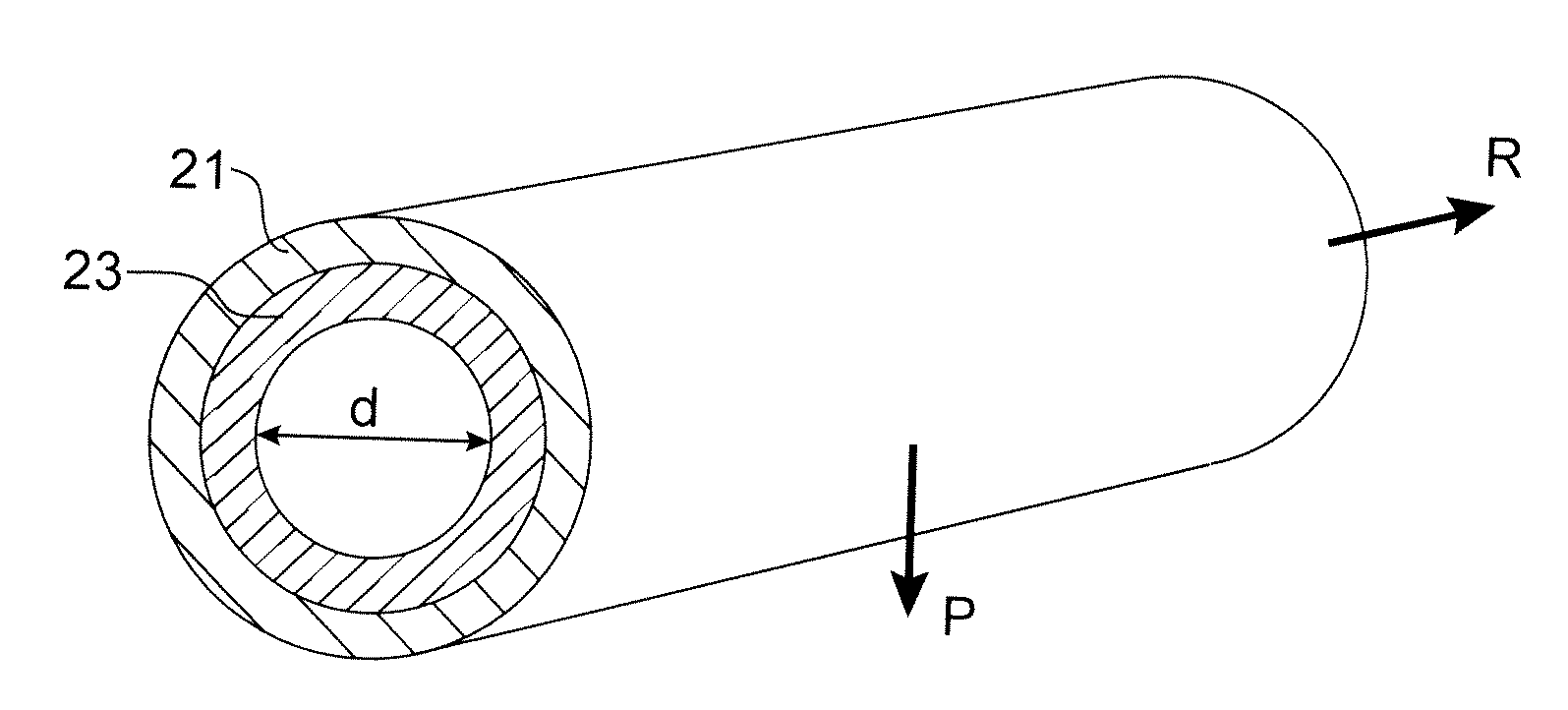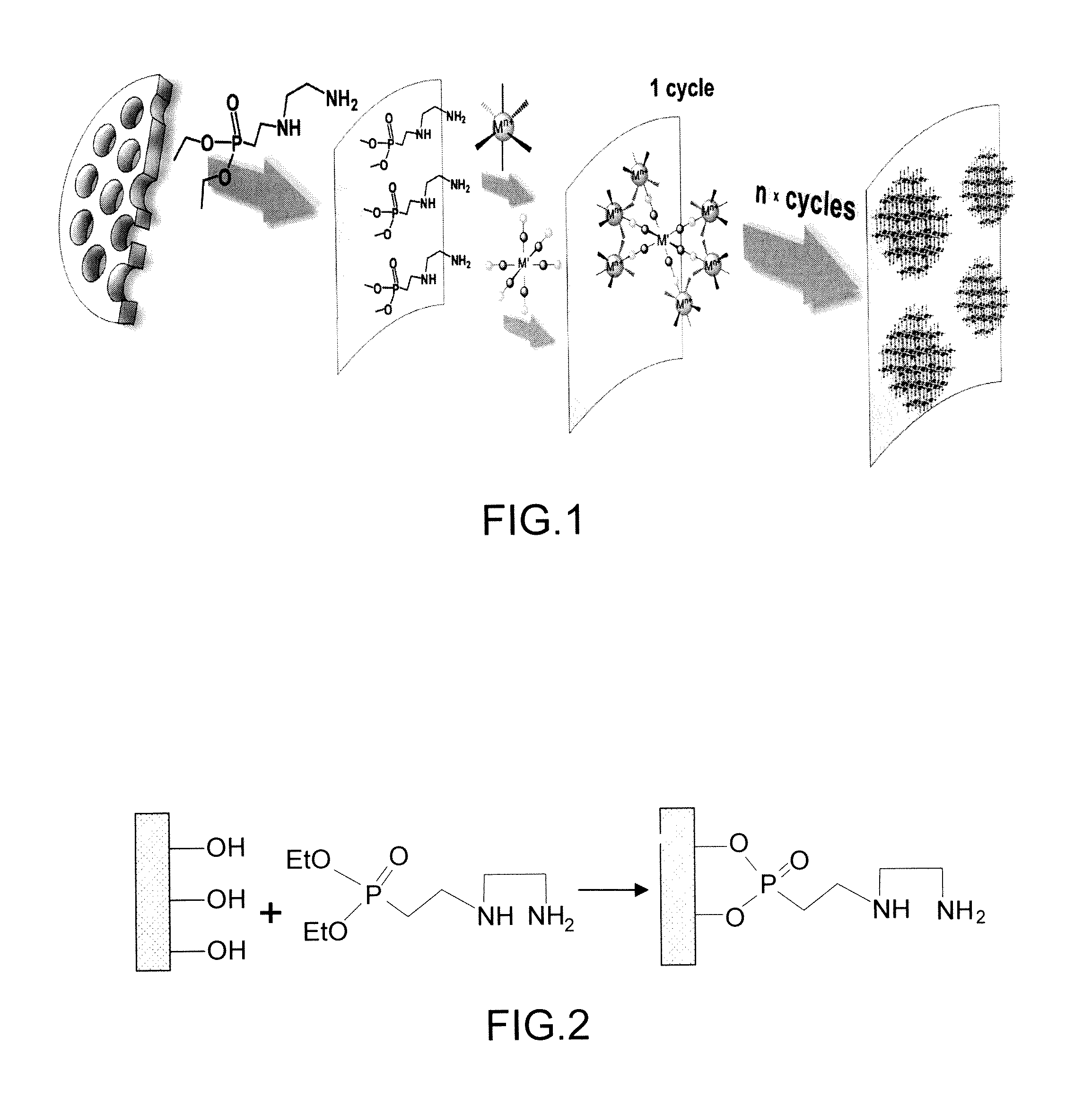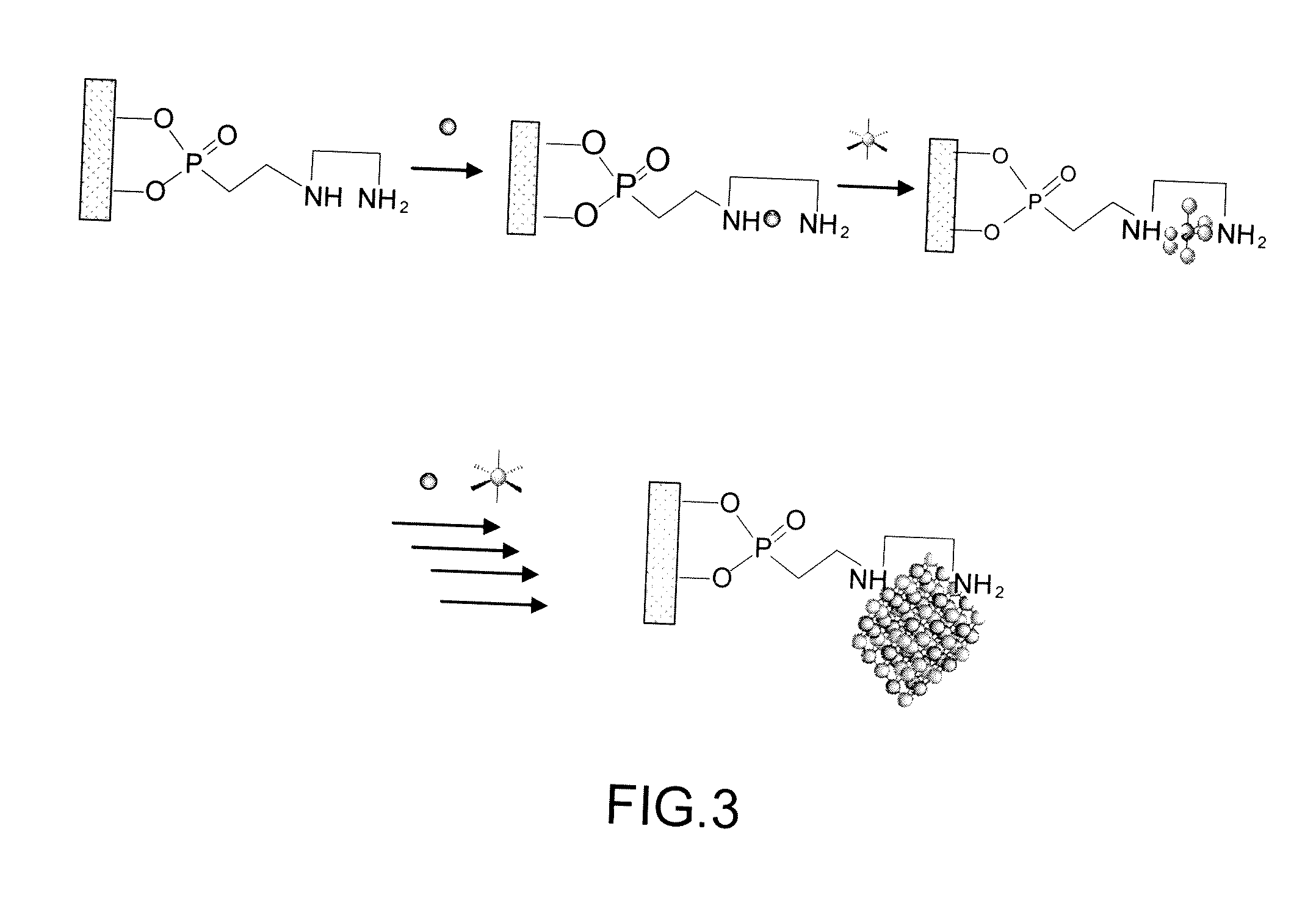Supported membrane functionalized with hexa- and octacyanometallates, process for the preparation thereof and separation process using same
- Summary
- Abstract
- Description
- Claims
- Application Information
AI Technical Summary
Benefits of technology
Problems solved by technology
Method used
Image
Examples
example 1
[0284]Grafting, in water, of a graft with phosphonate group onto a TiO2 membrane on TiO2 / Al2O3 support, followed by the growth in methanol of nanoparticles of copper hexacyanoferrate in said grafted membrane.
Experimental Device.
[0285]The device, assembly, used for grafting the graft with phosphonate group onto the membrane—in other words for functionalization of the membrane—then for growth of the nanoparticles, comprised a chromatography column in which the membrane was arranged. The top of the column was connected at its base via an external flexible tube on which a peristaltic pump was positioned ensuring circulation of liquid in a closed circuit within the column.
[0286]Using this device it was possible to perform grafting of the graft followed by growth of the nanoparticles in dynamic mode to promote insertion of the nanoparticles. Once the membrane was in place in the device, the volume of liquid it could contain was 60 mL.
[0287]The membrane used was a single-channel microfiltr...
example 2
[0306]Caesium extraction tests from an aqueous solution of caesium nitrate using the membrane prepared in Example 1.
[0307]In this example, extraction, binding tests of the caesium contained in an aqueous solution of caesium nitrate were performed using the membrane prepared in Example 1.
[0308]These tests were performed in a pilot filtration installation.
[0309]This pilot installation was similar to the installation illustrated in FIG. 4 with the difference however that the outlet pipe 13 (R), and outlet pipe 15 (P) were redirected towards the tank 1 for loop operation mode for this feasibility test.
[0310]This installation functioned in cross-flow and comprised:[0311]a tank containing the solution to be treated (volume used in the order of 1 L). This tank was double-walled and thermostat-controlled to maintain a constant temperature;[0312]a circulation and pressurising pump. The discharge of the pump was connected to the inlet of the membrane whilst its suction was connected to the ba...
example 3
[0324]Grafting, in water, of a graft with phosphonate group onto a TiO2 membrane on TiO2 / Al2O3 support, followed by growth in water of nanoparticles of nickel hexacyanoferrate in said grafted membrane.
[0325]In this example, the grafted nanoparticles differed from those in Example 1, and the solvent used for growth of these nanoparticles differed from the solvent used in Example 1.
[0326]The device, the experimental assembly used was the same as for Example 1.
[0327]The membrane used was identical to the membrane used in Example 1, namely a single-channel, microfiltration TiO2 membrane on TiO2 / Al2O3 support, having a porosity of 0.2 μm and membrane specific surface area in the order of 0.2 m2 / g.
[0328]Grafting of the Graft with Phosphonate Group:
[0329]This step was performed in the same manner as in Example 1.
[0330]Growth of Nanoparticles:
[0331]60 mL of a first solution of nickel sulfate at a concentration of 10−2 mol / L in ultrapure water were added to the device, assembled for grafting...
PUM
| Property | Measurement | Unit |
|---|---|---|
| Pore size | aaaaa | aaaaa |
| Pore size | aaaaa | aaaaa |
| Pore size | aaaaa | aaaaa |
Abstract
Description
Claims
Application Information
 Login to View More
Login to View More - R&D
- Intellectual Property
- Life Sciences
- Materials
- Tech Scout
- Unparalleled Data Quality
- Higher Quality Content
- 60% Fewer Hallucinations
Browse by: Latest US Patents, China's latest patents, Technical Efficacy Thesaurus, Application Domain, Technology Topic, Popular Technical Reports.
© 2025 PatSnap. All rights reserved.Legal|Privacy policy|Modern Slavery Act Transparency Statement|Sitemap|About US| Contact US: help@patsnap.com



